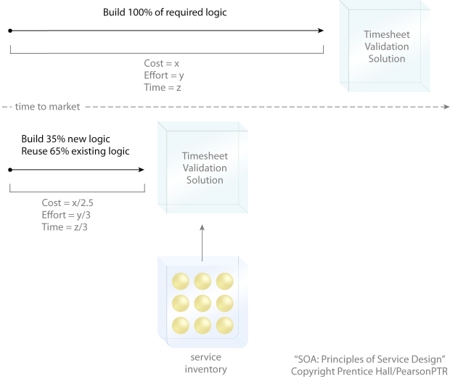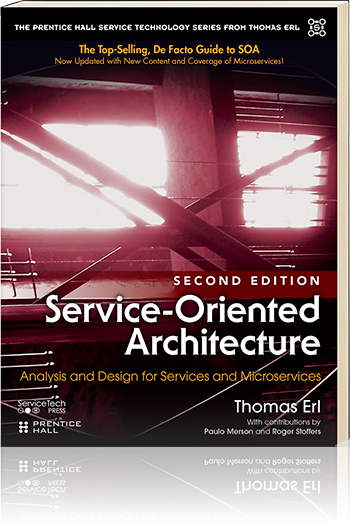SOA Patterns > Basics > What is SOA > Goals and Benefits of Service-Oriented Computing > Increased Organizational Agility
Increased Organizational Agility
Agility, on an organizational level, refers to efficiency with which an organization can respond to change. Increasing organizational agility is very attractive to corporations, especially those in the private sector. Being able to more quickly adapt to industry changes and outmaneuver competitors has tremendous strategic significance.
An IT department can sometimes be perceived as a bottleneck, hampering desired responsiveness by requiring too much time or resources to fulfill new or changing business requirements. This is one of the reasons agile development methods have gained popularity as they provide a means of addressing immediate, tactical concerns more rapidly.
Service-oriented computing is very much geared toward establishing wide-spread organizational agility. When service-orientation is applied throughout an enterprise, it results in the creation of services that are highly standardized and reusable and therefore agnostic to parent business processes and specific application environments.
As a service inventory is comprised of more and more of these agnostic services, an increasing percentage of its overall solution logic belongs to no one application environment. Instead, because these services have been positioned as reusable IT assets, they can be repeatedly composed into different configurations. As a result, the time and effort required to automate new or changed business processes is correspondingly reduced because development projects can now be completed with significantly less custom development effort.
The net result of this fundamental shift in project delivery is heightened responsiveness and reduced time to market potential, all of which translates into increased organizational agility.

Figure 1 – Another example of a formula used in SOA projects. This time, the delivery timeline is projected based on the percentage of “net new” solution logic that needs to be built. Though in this example only 35% of new logic is required, the timeline is reduced by around 50% because significant effort is still required to incorporate existing, reusable services from the inventory.
Note that organizational agility represents a target state that organizations work toward as they deliver services and populate service inventories. The organization benefits from increased responsiveness after a significant amount of services is in place. The processes required to model and design those services require more upfront cost and effort than building the corresponding quantity of solution logic using traditional project delivery approaches.
It is therefore important to acknowledge that service-orientation has a strategic focus that intends to establish a highly agile enterprise. This is different from agile development approaches that have more of a tactical focus due an emphasis on delivering solution logic more rapidly. From a delivery perspective, service-orientation does not tend to increase agility.
| Related Service-Orientation Principles
Standardized Service Contract, Service Loose Coupling, Service Abstraction, Service Reusability, Service Autonomy, Service Statelessness, Service Discoverability, Service Composability |
| Related SOA Patterns
Agnostic Capability, Agnostic Context, Canonical Protocol, Canonical Schema,Canonical Versioning, Capability Recomposition, Enterprise Service Bus,Orchestration, Service Grid, Service Layers, Service Refactoring |

